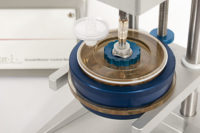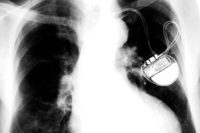The story: Four professors join forces to design a revolutionary medical device in their garage. A material scientist develops a bio absorbable polymer with healing properties. A mechanical engineer and cell biologist shape the polymer into a new functional kidney, and a physiologist develops a process for implanting the kidney that cures chronic kidney disease. Dreaming of a Nobel Prize they approach the FDA, a surgeon, a large medical device company, and a venture capitalist to discuss next steps . . . and are stunned at the response. The FDA responded with some forms. The surgeon doesn’t believe that their device works and is angry for wasting his time. Neither the medical device company nor venture capitalist will take their call.
What happened? This life-saving innovation will likely never save a patient because the inventors failed to develop a risk management or quality program to document their design or prove safety and efficacy.
TECH TIPSReliable test results are a necessity for any quality program. Data must be reliable, repeatable, and appropriate for the component, material, or product being tested. Instruments used to obtain test data should be manufactured by a quality certified vendor preferably with transducers maintained and calibrated with NIST traceability. There is a wide range of universal testing machines capable of covering a broad range of R&D uses, standard test requirements, and end product quality testing needs. |
Start-up medical device companies face a big challenge when it comes to resource budgeting for innovation and quality. Time and money is short, and a lean team often means that they lack the expertise to develop risk mitigation plans or quality benchmarks during the development of their new product. However, investment in a few tools can help new medical device companies develop a core, capable of developing both early preliminary data tracking tools and later more advanced quality programs to translate their innovations into the market.
The Tools
Reliable test results are a necessity for any quality program. Data must be reliable, repeatable, and appropriate for the component, material, or product being tested. Instruments used to obtain test data should be manufactured by a quality certified vendor preferably with transducers maintained and calibrated with NIST traceability. There is a wide range of universal testing machines capable of covering a broad range of R&D uses, standard test requirements, and end product quality testing needs. Companies should choose instruments to provide the appropriate resolution, accuracy, and control flexibility to meet standard ASTM/ISO/FDA guidance requirements suitable to their products.
The data collected by these instruments will ultimately be reviewed against a standard developed by research scientists, surgeons, research and development executives, and a suite of engineers. It is imperative that the instrumentation used is able to meet all of these criteria. Loading methods and testing conditions will also be impacted by equipment operators, in optimal conditions the instrumentation will be partially or fully automated to minimize operator impact.
Before testing even begins, the FDA sets guidelines for validating and documenting the testing machine per 21 CFR 820.72. This is often known as installation qualification and operational qualification or IQ/OQ. IQ is the first process that requires validation and documentation of the installation conditions, operation and safety features, identification of all user manuals and appropriate services needed to maintain the machine. OQ is the second process that is used to validate the test results and machine output.
For the validation of the results, calculations are checked, i.e. how the mean is being calculated and what rounding rules the software is using. For validation of the machine, things like transducer measurements are checked, speed and displacement can be verified and a general software functionality check can occur. The IQ/OQ process is a validation process that must be carefully documented and required to meet FDA standards. A company’s quality department can perform IQ/OQ documentation internally or many equipment suppliers can provide this service which is helpful for start-ups lacking the expertise.
In addition to this, reliable test results are only as reliable as the electronic records and documentation used to store them (a shock to many start-ups). In addition to appropriate instrumentation, software must be carefully chosen and invested in at the beginning of a project. The FDA has issued a specific guidance for electronic records, 21 CFR Part 11. Failure to comply with this guidance can result in fines for the organization, stops in current and future product production, delays in product time to market, and a lot of time and money spent troubleshooting errors in paper records.
Using test and measurement equipment to provide design documentation, material data, product fatigue results, and process documentation must be a top priority to ensure that new companies have a viable product no matter their business strategy.
Strategy 1: Regulatory Approval
The FDA’s mission is to protect and promote public health by assuring that patients and their providers have timely and continued access to safe and effective, high-quality medical devices and to facilitate medical innovation. There are risks associated with all medical devices; however, certain safety and efficacy questions need to be resolved prior to introduction to the patient population. New medical devices must be able to provide premarket data to be considered for patient introduction and further clinical trials. If the business strategy is to introduce a new product the company must initiate risk mitigation plans and quality benchmarks at the onset of the project.
The FDA will first request a benefit-risk assessment to determine if a reasonable assurance of safety can be met based on “valid scientific evidence.” The request for “valid scientific evidence” requires repeatable, reliable, and traceable data; easily provided if the company has a risk management plan in place. If the company has failed to put a plan in place, this request can represent a huge setback with regards to time and money, requiring the company to repeat experiments.
Example from Industry: A start-up in the Bay area was initiating a new medical device project. Public records showed that the established competition was using specific instrumentation for quality control testing on their medical device packaging. The start-up began to evaluate their quality program and preparations for their own device approval and realized packaging their device was critical to the product performance. They decided to invest in similar equipment to establish a way to test the packaging that was up to industry standards, and with which the regulatory bodies were informed.
Strategy 2: Market Approval & Adoption
The process of translating ideas into commercial products faces many challenges; one of them is the newness of the product. New markets have to be created to commercialize new products and potential customers may find it difficult to compare new products with standards. One way to create this market is to educate customers. Education requires comparison tests, data, and a comprehensive overview of the products and why it is better than current options. Once the company has set expectations it is necessary to meet these expectations with quality data.
The company does have some control over what and how the data is presented, but for those devices requiring regulatory approval the submission data is publicly available. The review status, safety communication, and recalls are all published for public review. Failure to support the initial promotion or vision of the product can result in a disastrous mismatch between what a company creates and what the customers value. Market demand may not be possible to generate without substantial product renovation, costing time and money.
Once the market has been created the company has a responsibility to meet the market demand with a quality tested product. This means that the manufacturing and testing must be scalable, which, in this context, can have many meanings. First, the number of samples increases, requiring instrumentation that is able to accommodate high throughput to maintain delivery schedules. Second, the data analysis must increase; this can be particularly difficult if initial tests were conducted on a “homebuilt” system.
Homebuilt systems may have been heavily modified throughout the development phase and sometimes the mechanical or software engineers responsible for the design are no longer with the company. If they are still on-site their time and attention may have shifted to a new project. In these instances, the company is stuck and significant time and money will be necessary to establish a scalable quality program to meet their new market demands. Customer expectations will only increase as the product becomes a cultural norm. Changes to materials or performance will not be tolerated and could result in a market shift to a new or competitive product.
Example from Industry: A startup company is developing a new material for dissolvable bone screws. Bio absorbable products are particularly interesting to the medical device community as they look for new solutions, more compatible with the in vivo environment. The company is able to measure the force and torque required to push and twist the screw on a “homemade” machine to meet their current testing backlog. However, once the dissolvable bone screw is operational, launched to the market, and sold, the lot release criteria will require that a certain subset of the product to be tested.
The number of samples to be tested will increase exponentially from the current quantity. The company has become concerned that they will not be able to meet the future testing demand in a timely manner. Today they are investigating alternative instrumentation options to ensure that their operations are scalable with their business plans.
Strategy 3: Acquisition
A common exit strategy for medical device start-ups is to focus on innovation and initial product development to ultimately sell their product to a larger company. Despite having no intent of pursuing regulatory approval or marketing directly to the end user, ignoring risk management and quality documentation is a big mistake.
It is important for companies whose product fits into a specific medical niche or within a portfolio of a larger biomedical company to establish a quality control plan that is comparable within the industry. This will enable the acquiring party to easily compare the device performance to current products and determine the performance and market advantage. The existence of a quality program will accelerate the acquisition and ultimately save the start-up significant time and money. If a quality program is not available, potential acquiring companies are likely to wait until the product is further developed, and reasonable safety and efficacy have been demonstrated.
Example from Industry: Recently a start-up in Minneapolis was developing a new product with the hopes of being acquired by a large medical device company. The start-up knew that the target acquiring used specific instrumentation for their research and development, and quality control programs. The instrumentation was provided by a certified manufacturer with premier service and support. The start-up made an informed decision to invest in similar systems, as opposed to using homebuilt instrumentation, to ensure that they would be able to provide analogous results. This investment means that they will have comparable data and confidence in their newly developed product test results when they present the product to would-be buyers.
Strategy 4: Competitive Differentiation
Another strategy for start-up medical device companies is to establish legitimization and competitive differentiation by setting the technical standards pertaining to component selection, processes, and performance criteria that new technology designs (products) are expected to achieve. Governing regulatory bodies mandate the safety and efficacy standards; however, with innovative products there is a new opportunity for the start-up company to educate and work with the regulatory bodies to write new standards and effectively lock out competitors. This strategy requires a concrete risk management and quality documentation plan at the forefront. The financial investment may be more significant than other new device strategies; however it can be minimized by ensuring that resources are used to invest in core instrumentation that meets current and future needs.
Example from Industry: A successful start-up based in Boston established themselves as consultants in the biomaterials testing industry. The start-up has representation at ASTM standards meetings and is currently working with a group of people to establish a standard for mechanically testing hydrogels. By being involved with past standards for general hydrogel characterization as well as future more specific hydrogel testing standards, this start-up is able to stay current on the cutting edge of industry standards while also ensuring they remain compliant.





